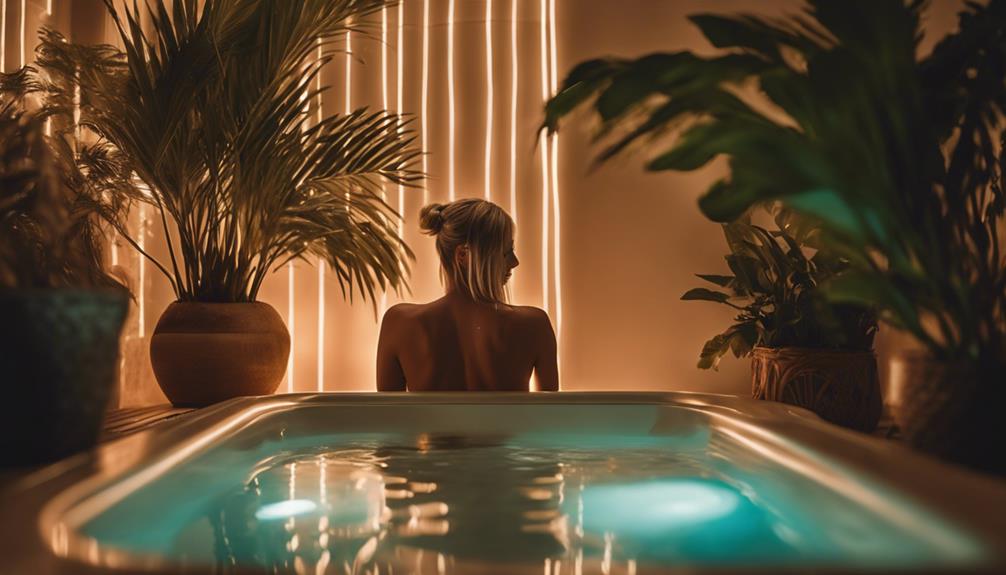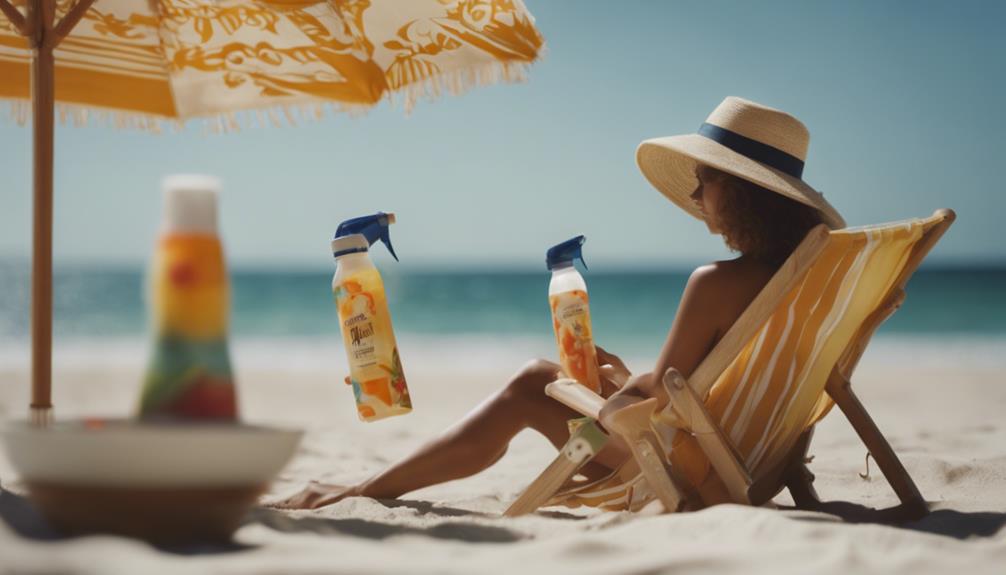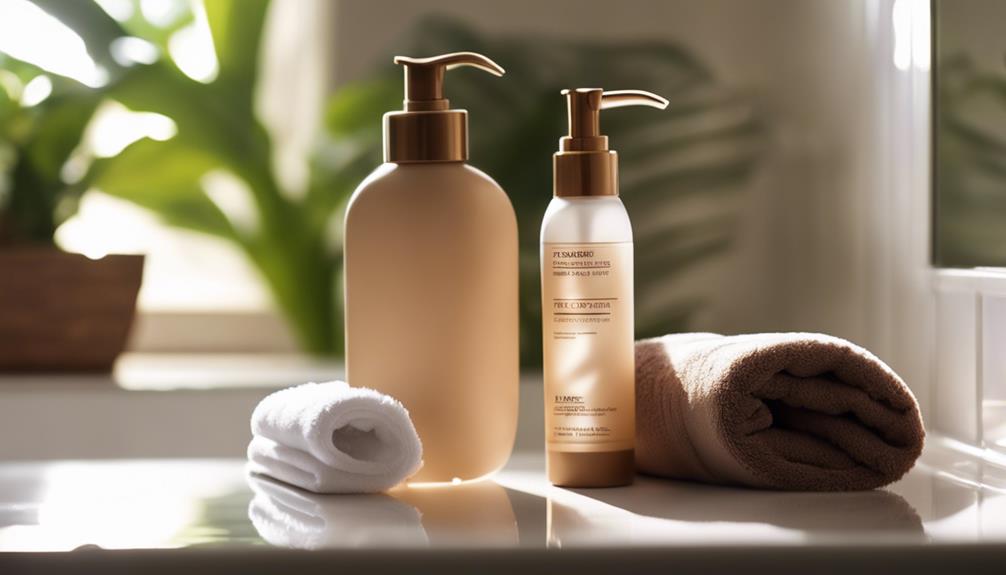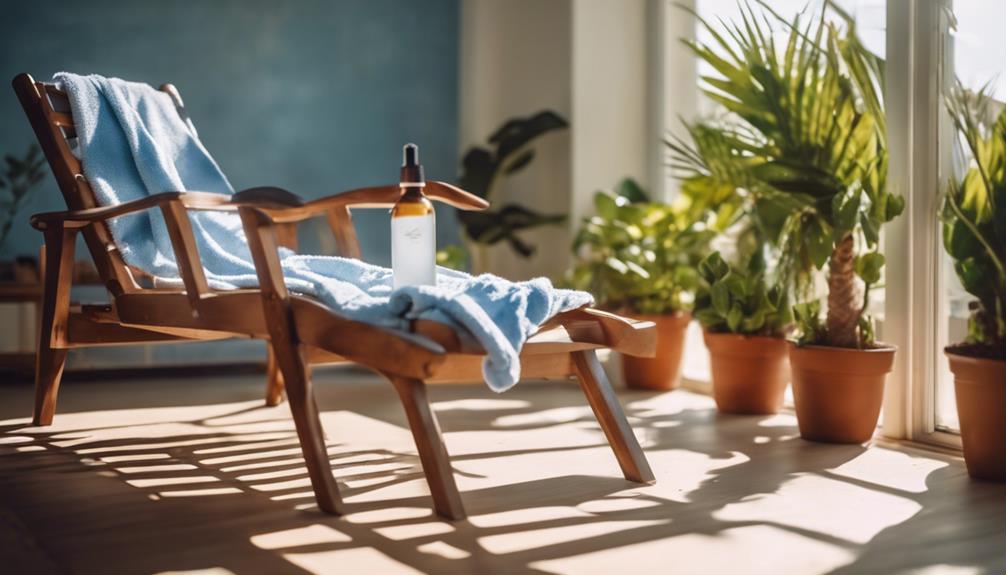Want to reveal the secrets to safe tanning? First, know your skin type; fair skin sunburns faster than dark skin. Prep by exfoliating and moisturizing, so your skin's ready for that sun-kissed glow. Don't forget protective goggles, especially in tanning beds! Start with short sessions, and keep track of your tanning time to avoid burns. Choose the right tanning products that suit your skin tone and include moisturizers. Finally, give your skin some love afterwards by hydrating daily. Follow these tips, and you'll be golden! Stick around, and you'll uncover even more tricks to keep your tan glowing and safe.
Key Takeaways
- Identify your skin type and tone to tailor sun exposure and prevent burns during tanning.
- Exfoliate and moisturize your skin before tanning for even color and improved UV absorption.
- Always wear protective goggles to shield your eyes from harmful UV rays while tanning.
- Monitor your tanning sessions and gradually increase exposure to avoid overexposure and skin damage.
Understanding Skin Type
Understanding your skin type is essential for safe tanning, as it influences how your skin reacts to UV rays.
You've got to know whether you're fair, medium, or dark-skinned because that helps determine how much sun your skin can handle. If you're unsure, consulting a skincare professional can be a game-changer!
It's also important to identify any skin sensitivity you might have; nobody wants a surprise sunburn! Plus, check any medications you're on, as they can make your skin more sensitive.
During and after tanning sessions, keep an eye on how your skin looks and feels.
And don't forget to use tanning lotions that match your skin type—hydration is key to keeping that glow without the burn!
Pre-Tan Preparation

Before you hit the tanning bed, it's important to prepare your skin properly for ideal results and to minimize any risks.
Start by exfoliating your skin a day before; this helps achieve an even tan and better UV absorption.
Don't forget to hydrate! Apply a lightweight, non-oily moisturizer to keep your skin feeling fresh.
If you're planning to shave, do it 24-48 hours in advance for that smooth, silky feel.
Also, steer clear of heavy makeup and jewelry, as they can cause uneven tanning.
If you're unsure about anything, chat with the salon professionals; they're there to help!
With a little prep, you'll be on your way to a fabulous tan without the worry. Happy tanning!
Eye Protection

Always wear protective goggles designed for tanning beds to shield your eyes from harmful UV rays. You wouldn't walk into a bright room without sunglasses, right? Tanning beds can be just as intense!
Avoid wearing contact lenses during your sessions, as they can trap UV light and lead to irritation. Make sure your goggles fit snugly and feel comfortable; they shouldn't be slipping off or pinching your nose!
Regularly check your eyewear for scratches or damage, since a tiny flaw can let those pesky rays through. Remember, prioritizing your eye safety now means you'll enjoy clear vision for years to come.
Monitoring Sessions

Keeping track of your tanning sessions is essential to avoid overexposure to harmful UV rays. You don't want to turn into a lobster, right?
Here are some tips to help you monitor your sessions effectively:
- Start with shorter sessions, especially if you're new to tanning.
- Gradually increase your exposure time based on how your skin reacts.
- Stick to recommended tanning limits; no one wants to burn!
- Keep a log of your sessions, including duration and dates.
Choosing Tanning Products

Selecting the right tanning products plays an essential role in achieving a safe and natural-looking tan. You want to match your bronzer to your skin tone, so it looks like you just came back from a beach vacation—not from a bottle!
Look for indoor tanning lotions that are packed with moisturizing ingredients, keeping your skin happy and hydrated. If you're feeling adventurous, try bronzers or accelerators that boost your results without harsh chemicals—your skin will thank you!
Don't forget to protect your lips with an SPF lip balm; they need love too! By choosing wisely, you can rock that sun-kissed glow while keeping your skin healthy and safe.
Post-Tan Care

Post-tan care is essential for maintaining your glow and ensuring your skin stays healthy and hydrated. After tanning, your skin deserves some TLC, so don't skip this important step!
Here's what you should do:
- Moisturize daily with a rich lotion to keep your skin soft and supple.
- Avoid hot showers for a day or two; stick to lukewarm water to prevent fading.
- Stay hydrated by drinking plenty of water; your skin will thank you!
- Use tan-extender products to make your bronzed look last longer.
Hygiene Practices

Maintaining hygiene practices in tanning facilities not only protects your skin but also enhances your overall tanning experience.
You wouldn't want to lay down on a bed that's a germ magnet, right? So, make sure the tanning beds are regularly sanitized after each use. It's as simple as using disinfectant spray or wipes on those high-touch surfaces.
Also, let the equipment dry and air out afterward, because who likes a damp tanning bed? If you're using a home tanning bed, establish a cleaning routine to keep things fresh and clean.
Frequently Asked Questions
Can Tanning Beds Cause Skin Cancer Over Time?
Yes, tanning beds can increase your risk of skin cancer over time. It's essential to understand the dangers of UV exposure, monitor your sessions, and prioritize skin health for long-term safety. Always consult professionals for guidance.
What Are the Signs of Tanning Bed Overexposure?
If you're wondering about tanning bed overexposure, look for signs like redness, peeling, or blistering skin. You might also notice increased sensitivity or a burning sensation, indicating it's time to cut back on sessions.
How Often Should I Tan for Optimal Results?
For ideal results, you should tan about once or twice a week, gradually increasing sessions based on your skin type. Always listen to your body, and adjust frequency to avoid overexposure and maintain skin health.
Is Indoor Tanning Safe for Pregnant Women?
Did you know that around 10% of pregnant women use tanning beds? It's best to avoid indoor tanning during pregnancy due to potential risks. Consult your doctor for safe alternatives to achieve a healthy glow.
What Are the Best Alternatives to Tanning Beds?
When considering alternatives to tanning beds, you can opt for sunless tanning lotions, sprays, or bronzers. Another option is achieving a natural glow through gradual tanning products that hydrate while providing color without UV exposure.
What are the best techniques for safe tanning to avoid any health risks?
When it comes to tanning, it’s important to follow essential tanning bed safety tips to avoid any health risks. Opt for gradual tanning sessions, use a high SPF sunscreen, and always wear protective eyewear. Stay hydrated and take breaks to avoid overexposure to UV rays. These techniques can help ensure safe tanning.
Conclusion
Now that you're armed with the secrets to safe tanning, you can bask in the sun with confidence!
Just remember, while a gorgeous glow is tempting, protecting your skin is key.
Think of it like balancing a delicious dessert—you want just the right amount without overindulging.
So, whether you're lounging by the pool or hitting the beach, keep those tips in mind.
With the right approach, you'll shine brightly and keep your skin happy!









